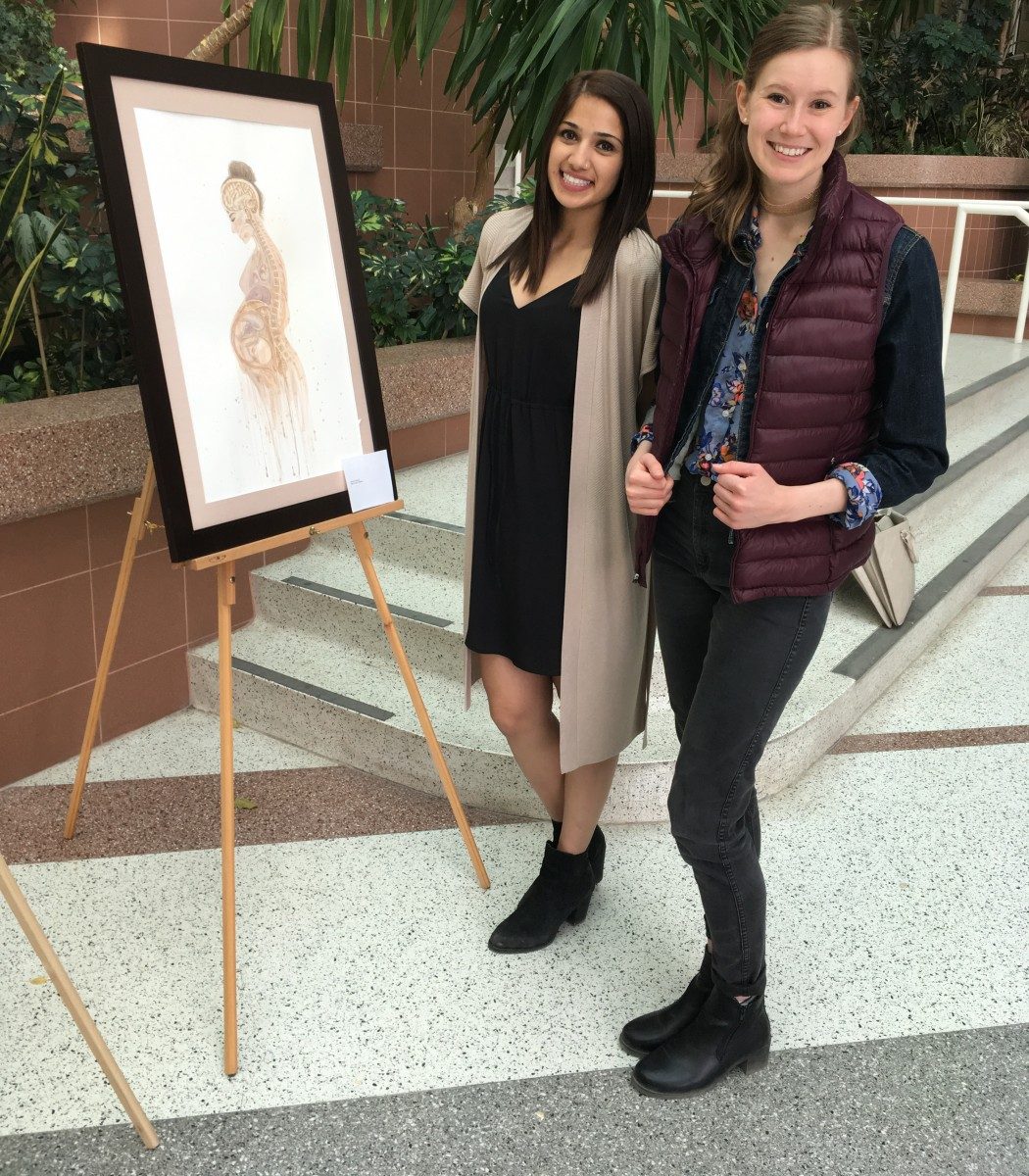
Event organizers Zeenib Kohja and Brigitte Baragar say mental health is just as important as physical well-being.
Campus art show unveils mental illness, celebrates resilience
According to the Canadian Mental Health Association, 20 per cent of Canadians will experience some form of mental illness at some point in their lives.
So, next time you’re hanging out in Campo or sipping a coffee in the Brodie Atrium, take a look around. If there are more than five people in the room with you, at least one of them knows what it’s like to live with depression. Or schizophrenia. Maybe even an eating disorder.
You’ll probably never know it, though. Given the stigma around mental illness, it’s unlikely that anyone’s going to bring it up, even if your friends and colleagues feel just fine mentioning their torn rotator cuff or how they’re managing their diabetes.
Zeenib Kohja and Brigitte Baragar say it’s time to change all that.
The two second-year medicine students were the organizers behind a yearly art show that showcases the creative side of students, faculty and staff. This year, the chosen theme was “Unveiled.”
“This is a topic that affects everyone,” says Baragar, one of the event organizers. “Any age, any profession. We should be able to talk about it.”
From April 17 – 19, 2017, campus artists did just that, opening up about mental illness through art. The exhibition spanned every medium from acrylics and pencil drawings to beadwork and quilting. In the past, the annual event was only open to members of the Max Rady College of Medicine, but this year organizers said they were ready to involve the whole Rady Faculty of Health Sciences.
“It was time to open it up,” said Kohja. “We got quite a variety of submissions—we were really impressed.”
Every artwork sparks a different reaction for viewers, but for Kohja, a black and white image of a young woman held a particular meaning. On the left of the picture is a plain cup of coffee. On the right, her outstretched hand holds a human heart. “It reminds you of the challenges students in university face. They’re coping with stress, but nobody knows how they’re feeling inside. This is about showing your heart,” said Kohja. “It’s really powerful.”
Other artists came at the topic differently, approaching artwork as a way to make sure they stay mentally strong as they take on the challenges of a stressful profession. “I use art to relax,” said third-year med student Summer Debreuil, who also considers her detailed anatomical artwork a valuable learning aid. From a very young age, her grandfather, who was an artist himself, guided her developing skill and she began drawing portraits and figures.
“As I learned more about medicine, my art shifted naturally to include more internal anatomy.” She included two pieces in the show, both featuring the internal views of figures, one of a couple kissing and the second with a mother and developing child. “I know that my love of art makes me a better medical student and my experiences as a student make me a better artist!”
As an annual event, the art show will take place again next year. While the theme has yet to be determined, Kohja and Baragar encourage all artists in the faculty to keep working on their art with an eye towards participating in 2018.
For more information about mental health resources at the University of Manitoba and beyond, follow the links below:






